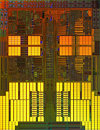Taxi Life Devs Address Performance Issues & React to Player Feedback
Hello Drivers. Here we are. Taxi Life was released about two weeks ago. First of all, we'd like to thank you for all your support and feedback to improve the game. Reading your feedback, your kind messages and your encouragement has given us a lot of fuel for this first week. We are glad to read that many of you are enjoying driving in Barcelona! Now, let's get straight to the point. We are aware that you're interested in what is going on next in Taxi Life. And in this post, we want to share with you how our first week was for the team, and what's coming in the future of Taxi Life.
Driving Wheel
The main feedback we've received is that there aren't enough steering wheels compatible with the game. During the development of Taxi Life we worked with the driving wheels that were available for us. There are a lot of models out there, and it takes a lot of time to make every single driving wheel compatible with the game. It's not an excuse, but this was our situation. We really want to expand this list, and improve some actual driving wheels. We have a step-by-step plan that we are polishing right now and should let you know in more detail soon how it will look. In parallel we need to fix other issues you're already experiencing in-game.
Driving Wheel
The main feedback we've received is that there aren't enough steering wheels compatible with the game. During the development of Taxi Life we worked with the driving wheels that were available for us. There are a lot of models out there, and it takes a lot of time to make every single driving wheel compatible with the game. It's not an excuse, but this was our situation. We really want to expand this list, and improve some actual driving wheels. We have a step-by-step plan that we are polishing right now and should let you know in more detail soon how it will look. In parallel we need to fix other issues you're already experiencing in-game.

















































